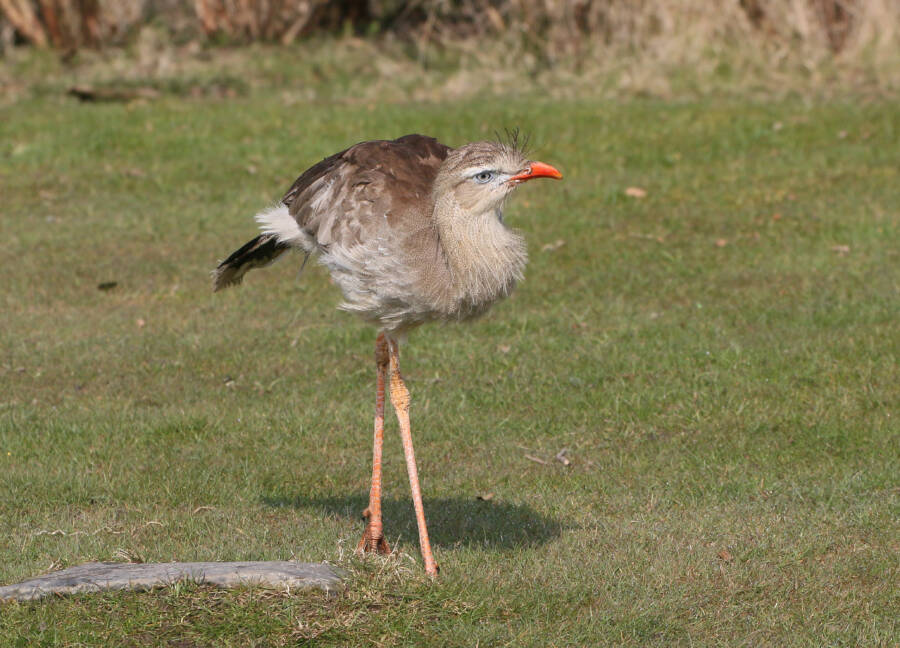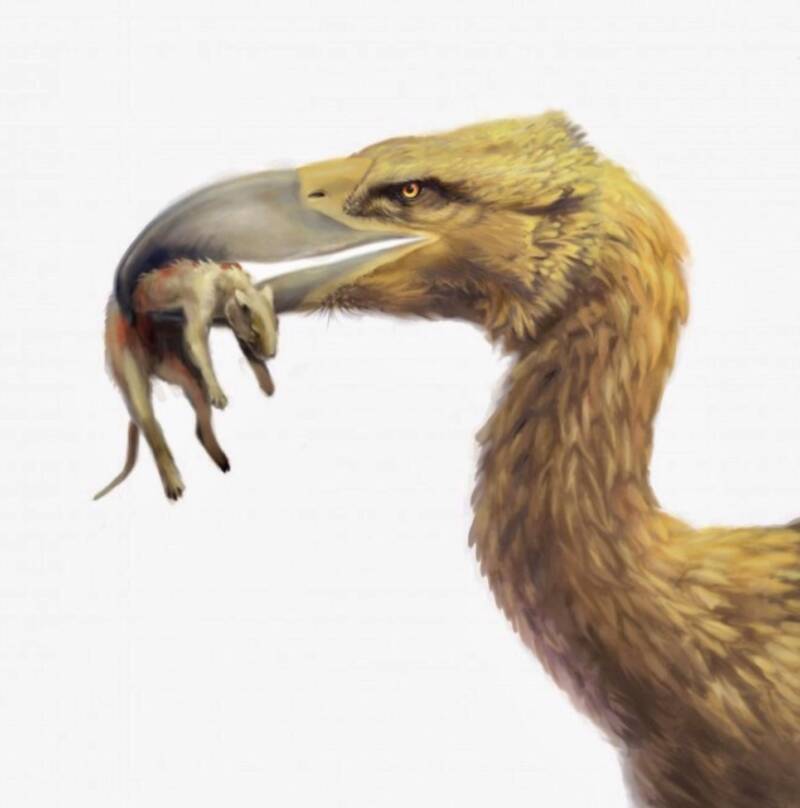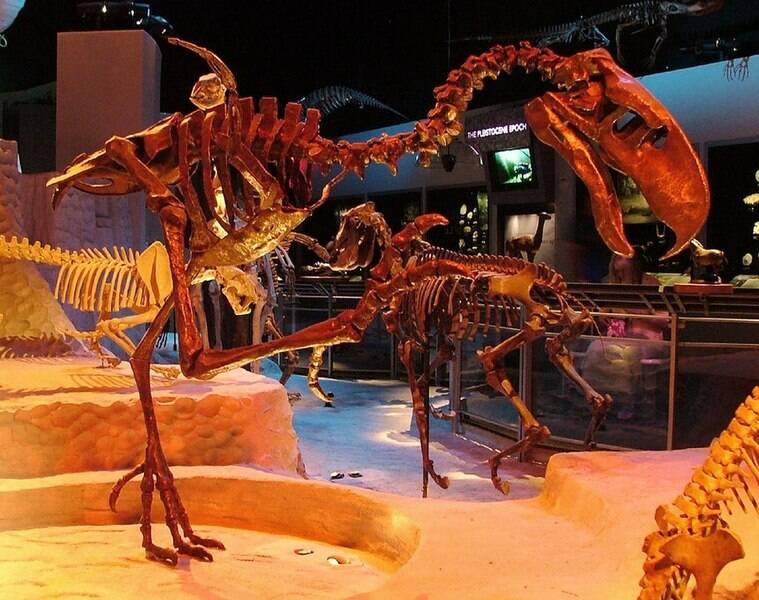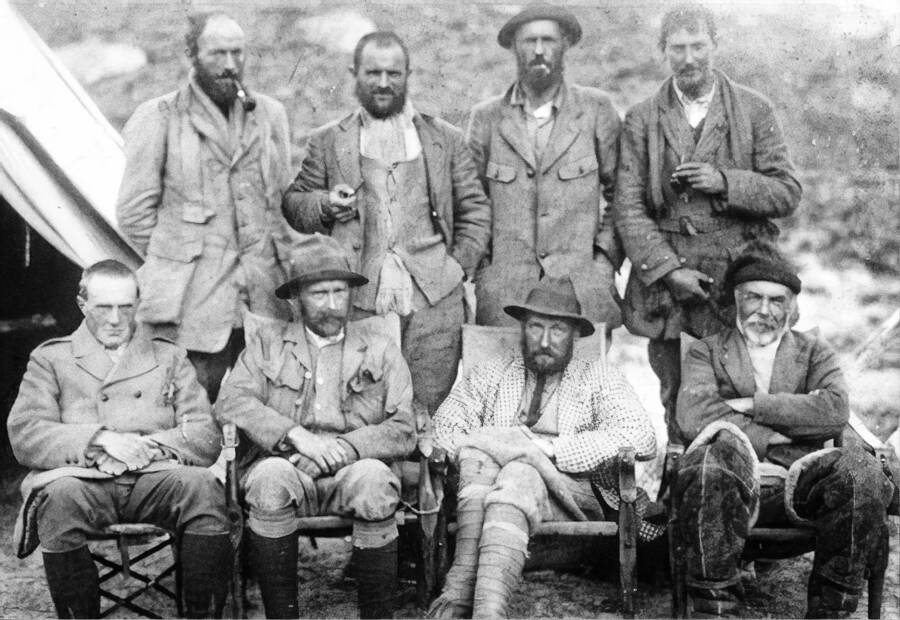
For much of the Cenozoic Era, terror birds reigned supreme over the landscapes of South America, wielding hatchet-like beaks and standing as formidable apex predators. Despite their dominance, these avian giants met their demise roughly 2 million years ago, leaving behind a legacy shrouded in mystery and speculation.
The Discovery of Phorusrhacids

First described by Argentinean paleontologist Florentino Ameghino in 1887, terror birds, officially known as Phorusrhacids, emerged as fearsome predators approximately 60 million years ago. The discovery of incomplete mandibles in Patagonia’s Santa Cruz Formation marked the initial glimpse into the world of these ancient beasts.
Subsequent findings unveiled a diverse array of terror bird species, ranging from the relatively petite Llallawavis scagliai to the colossal Kelenken guillermoi. With a wingspan equivalent to an average city bus and a skull of unparalleled size, Kelenken stood as a towering testament to the formidable nature of these avian predators.
Inside the Reign of the Terror Birds

Between 60 million and 2 million years ago, terror birds dominated South America’s ecosystems with their combination of size, speed, and deadly weaponry. While incapable of flight, these ground-bound giants could reach speeds of up to 60 miles per hour, utilizing their razor-sharp beaks as formidable weapons against unsuspecting prey.
Although some scientists have proposed herbivorous tendencies among terror birds, the prevailing belief is that they were formidable predators. Armed with immense skull strength, they likely dispatched prey with swift, lethal strikes — a testament to their prowess as apex predators.
Speculation persists regarding the exact diet of terror birds, with some scientists suggesting a carnivorous lifestyle while others advocate for herbivory. Despite this uncertainty, advancements in paleontological research have offered insights into the vocalizations of these ancient beasts, with reconstructed inner ears hinting at low-frequency calls reminiscent of modern-day emus or ostriches.
What Happened to the Terror Birds?

As the continents of North and South America converged, ushering in a new era of competition and ecological change, the reign of the terror birds began to wane. Encroaching predators such as jaguars and sabertooth cats, coupled with shifting climates and resource scarcity, contributed to their eventual decline and extinction.
While the exact circumstances surrounding their demise remain subject to ongoing debate, the legacy of the terror birds endures as a testament to the complexities of prehistoric ecosystems and the ever-changing dynamics of Earth’s ancient past.
Hot news:
News
Se desarrolla el escándalo, se revela la identidad: modelo de Instagram, captada en fotos picantes en la playa con el boxeador comprometido Ryan García, envía ondas de choque a través de las redes sociales
Ryan García, realmente, tiene algo que explicarle a su futura esposa. García fue visto en Miami celebrando su victoria sobre Devin Haney con una mujer misteriosa. No solo fue visto con ella, sino que también se le vio tomándola de…
‘Soy el mejor’ – Canelo Álvarez escribe en su diario mientras logra una impresionante caída sobre Jaime Munguía
Canelo Alvarez demostró que sigue siendo el mejor supermediano del planeta contra Jaime Munguía el sábado por la noche. El de 33 años retuvo su corona indiscutible de 168 libras el sábado por la noche a través de una decisión…
Luis Nery sabe que debe ser un villano en Fan de Naoya Inoue: ‘Soy el malo’
“Digan que soy el malo,” dijo un Luis Nery impasible, la noche antes de enfrentarse a Naoya Inoue en el Tokyo Dome. Nery es el villano de la historia aquí, prohibido en Japón pero traído de vuelta para cumplir penitencia…
He aquí, el monstruo despierta!
Se le llama el “Monstruo”, pero Naoya Inoue parece que podría ser un héroe de cómic para niños o estar en una banda de chicos. Tiene un rostro angelical, un destello de color claro en su cabello oscuro, y puede…
Tyson Fury envía con confianza un mensaje de dos palabras antes de la pelea con Oleksandr Usyk después del aterrizaje en Arabia Saudita
Tyson Fury ha llegado a Arabia Saudita antes de su pelea de peso pesado con Oleksandr Usyk a finales de este mes. Los dos pesos pesados pelearán en Riyadh el sábado 18 de mayo por la oportunidad de ganar los…
Los elogios poco sinceros de Tyson Fury se perciben como un intento de manipulación: muy poco, demasiado tarde
Vídeo al final de la noticia El campeón peso pesado del Consejo Mundial de Boxeo (CMB), Tyson Fury, ha cambiado de tono al elogiar al campeón de la IBF/WBA/WBO, Oleksandr Usyk, antes de su pelea el 18 de mayo en…
End of content
No more pages to load















